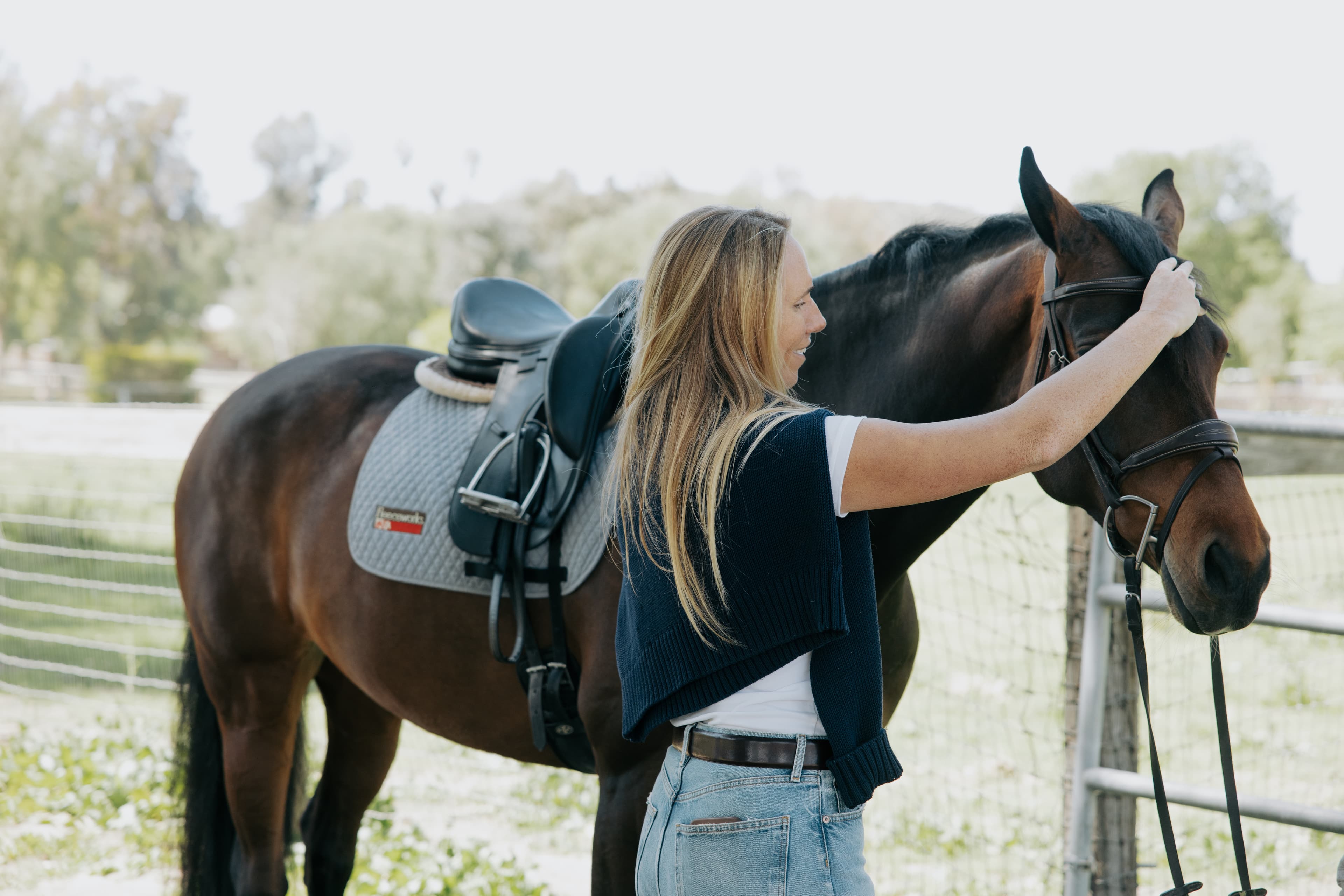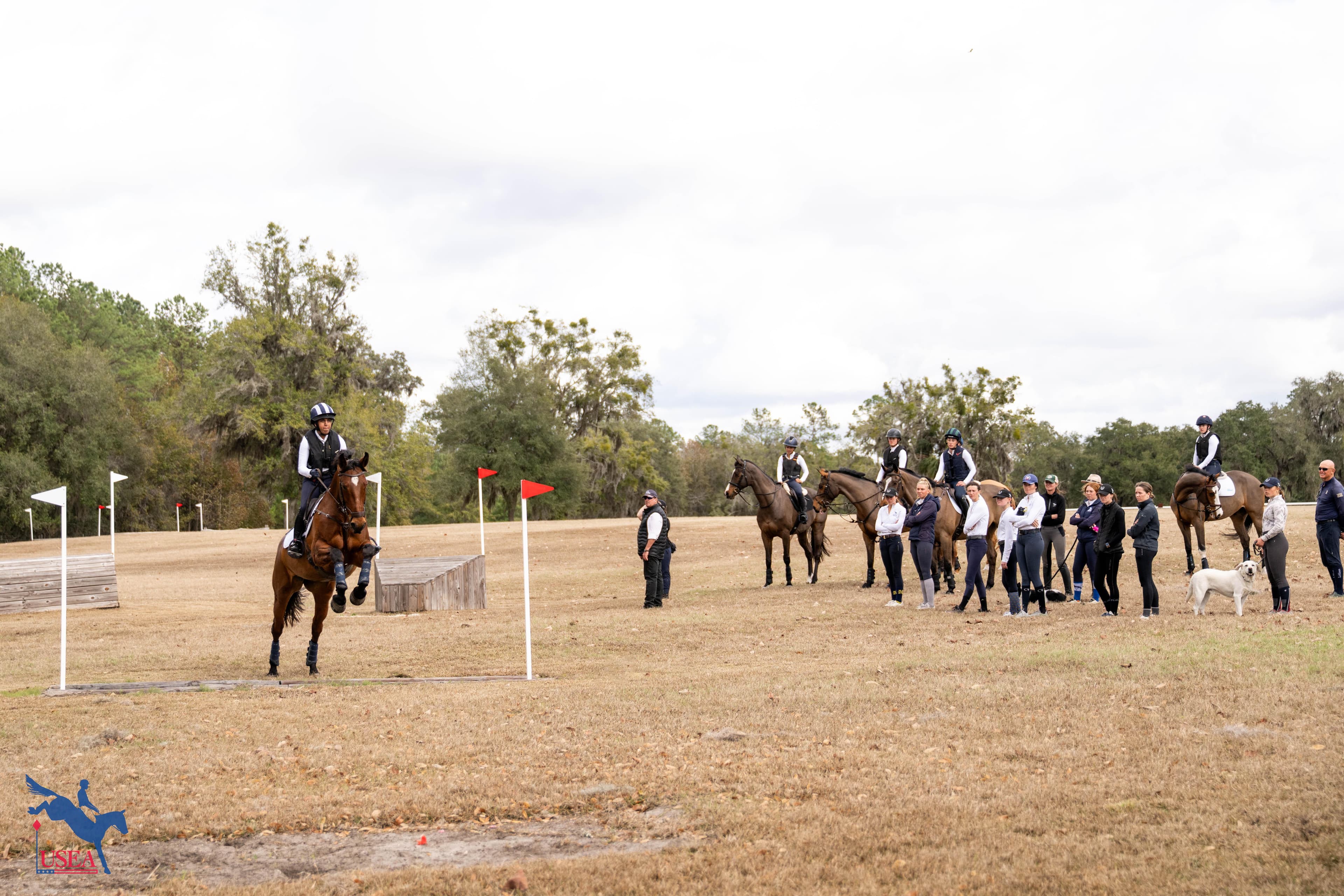Connemara Wil’Ya Love Me's Seen Waskiewicz Through All of Life's Ups and Downs
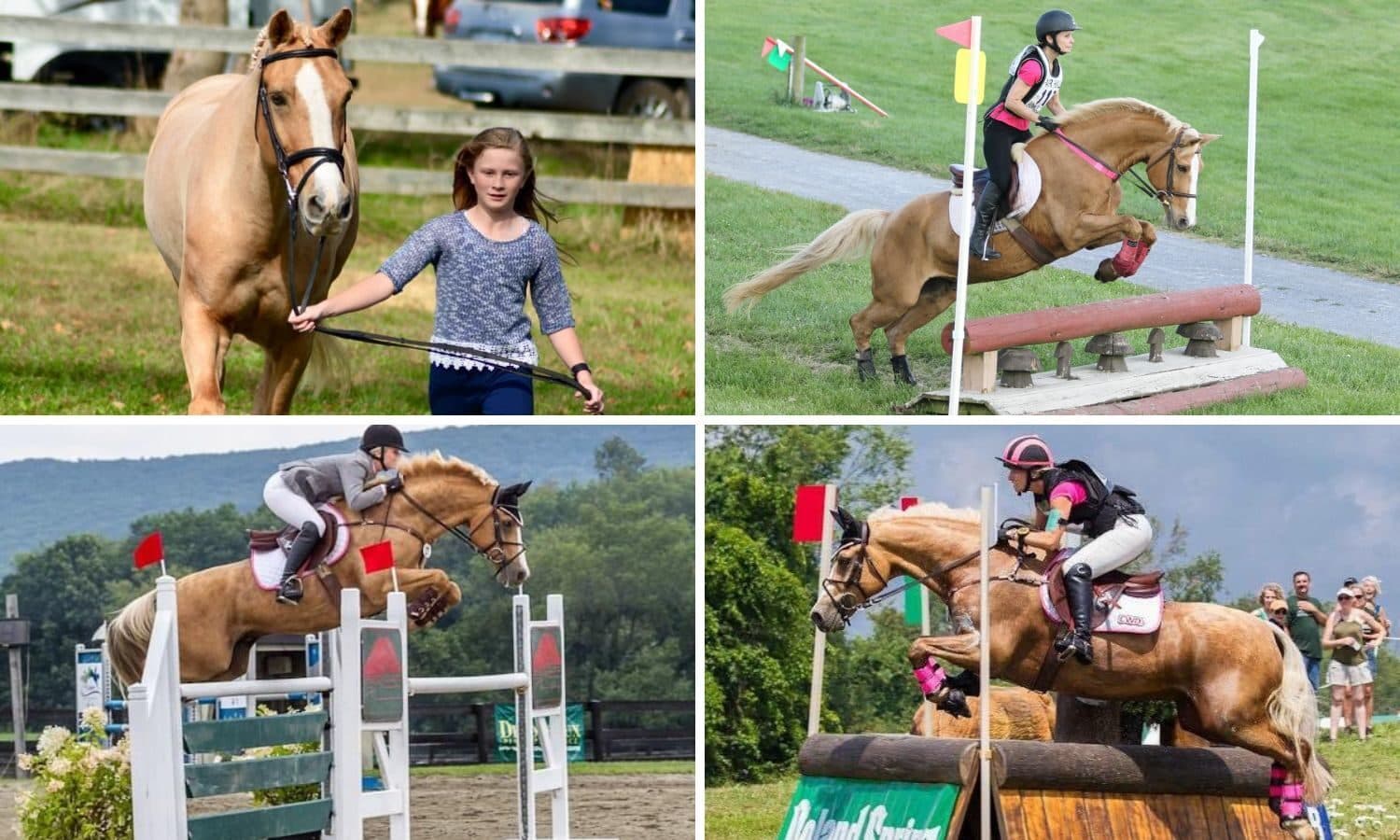
For Maryland eventer Courtney Waskiewicz, a bond formed with a talented, yet quirky, palomino Connemara pony more than two decades ago shaped her career as a horsewoman. Together, she and Wil’Ya Love Me (better known as “Willy”) learned to trust one another, even when the odds were stacked against them. Decked out in their trademark black-and-pink, the pair garnered a fan club in their rise to the Advanced level. And though Willy’s days at the top levels are over, he’s still ruling the roost at home—quirks and all.
When Waskiewicz and her mother, Janice Brezik-Sendak, first met Willy, they were inexperienced horse owners. At the time, they had a little Morgan cross named Cody. “[Early on] he did nothing but walk, trot, and buck,” recalls Waskiewicz, with a laugh. Eventually, the gelding became a successful lower-level campaigner, but it was Willy who would change Waskiewicz’s life forever.
“My parents wanted to instill a solid work ethic in both myself and my sister,” says Waskiewicz. “Since we had no idea what we were doing, riding lessons were essential…but expensive. If riding was something important to me, then I needed to contribute as much as possible to this hobby starting immediately. My mom and I would go to the barn on weekends and do entire shifts for 30-plus horses to chip away at lesson and horse expenses. One weekend when we arrived at the barn, a woman was trying to load a pony on her trailer. Turns out, this pony had been sent to be broken and sold as a hunter, and he was just too naughty and wasn’t going to cut it as a hunter.”
Brezik-Sendak offered to buy the little gelding because he looked like Roy Rogers’ Trigger, and $2500 later they owned a barely trained 2-year-old. Back then, they weren’t familiar with his bloodlines, but the athletic ability he inherited from his sire, Grange Finn Sparrow, wasn’t a fluke—the stallion produced other top competitors such as five-star eventer Sparrow’s Nio.
As two youngsters learning the ropes together, Waskiewicz and Willy’s early years were tumultuous at times.“I was a bit of a horse-crazed kid trying to soak up everything and anything, without any good instruction,” she said. “Because we didn’t know any better, we ended up riding with local trainers who really lacked credentials, and I learned a ton of bad habits that I still battle today. It was quickly clear that Willy wasn’t going to be a horse for my mom as he was incredibly flighty and had a wicked spook. If you moved one jump in the area, he knew and would spend the entire ride having a complete meltdown over the moved object.”
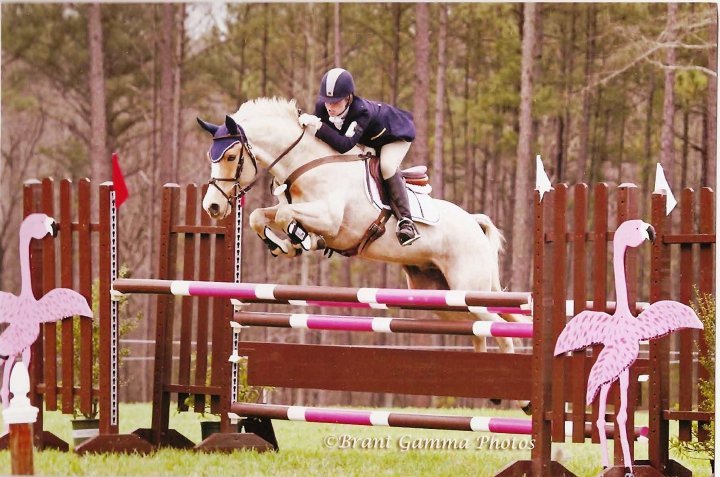
Though training Willy was always an exercise in patience and stickability, they found a Pony Club to help to guide them in the right direction. “Some days you just had to acknowledge that no progress was going to be made,” Waskiewicz said, “so I would pull his tack, throw a lead rope around his neck, and go hacking for hours or even take him for a swim.”
Willy was never scared of the fences, but he would react to everything around the fences, Waskiewicz recalls. In one of his first events, she wasn’t even able to get him into the start box and was eliminated. “This is ironic, because as he learned what the start box actually meant, he became one of the most difficult horses to walk to the box as he wanted to rear and leap into the air rather than wait for the starter’s orders.”
But it wasn’t just the start box that caused occasional issues. “One year I was competing in the Training at MCTA’s event at Shawan Downs, and you had to gallop through an opening in the fenceline,” Waskiewicz says. “Willy took great offense to this, spooked, and promptly dumped me. This was the era of being able to hop back on, so luckily I caught him and carried on…but that was a typical ‘Willy moment.’ ”
Another time at Shawan Downs it was pouring, and the dressage judge had windshield wipers on so that she could see the riders. “Willy got to X, halted, spooked, spun around and refused to go any further,” Waskiewicz said. “We somewhat did our test with lots of bolting and running sideways. I’m pretty sure I left the ring in tears, but it builds character, I guess!”
Even though Willy’s antics kept them all on their toes over the years, Brezik-Sendak had faith in her daughter. “I’m so incredibly proud of Courtney’s perseverance,” she said. “Sometimes, it was two steps forward and 10 steps back, but she never stopped believing in him. Every time they’d move up the ladder, we’d always ask trainers, ‘Is he ready? Will it be too hard for him?’ So many trainers early on said he’d never be able to move up the levels. But they worked hard and accomplished so much together.”
For Waskiewicz, riding Willy was all she knew—buying another horse wasn’t an option. If she wanted to move up, it was going to be with Willy. “I knew he was small, but I didn’t realize that taking a pony Advanced was an anomaly. Sally Cousins gave me some great advice early on: ‘Take it one jump at a time. And if you don’t like how it is going, pull up.’ This is how we moved up every level. We would practice and then just try one fence at a time. I stayed at each level for a while, multiple years even, because we were both learning, finessing, and figuring things out.”
With a safe plan in the works, Waskiewicz was able to chart a path up the levels that worked for both of them. “I know the current model is to get horses to the Advanced level by age 8, but that just has never been my program,” she said. “I’m a naturally cautious person and tend to overthink and overanalyze, so I need to feel incredibly comfortable before pushing the envelope. Entering Willy in Advanced was a hard decision, and several people that I greatly respected warned me against it. Justifiably so, because with that small of a horse jumping fences that you can’t see over, your margin for error is incredibly small. So my canter had to be perfect, my distances had to be perfect, my position had to be perfect—and that is a lot of pressure. Willy does have a great sense of self-preservation, and when I wasn’t up to snuff, he would just run out very politely. He still does this today when teaching lessons…a true professor.”
“I always admired her horsemanship,” Waskiewicz’s mother said of her. “She always had his welfare first.”
When Willy was competing at the top levels, his disdain for dressage often made itself known. “His canter was always amazing, but his trot was a sewing machine, and he loved to bolt during the extended canter. We would train pretty well at home, be acceptable in warmup, but the minute he went into the ring all bets were off, and you just had to smile.”
However, the show jumping was a different story. “To jump Willy at that level, there is just nothing like it,” she says. “He was hot, spicy, and absolutely loved his job. He was allergic to the jumps—he would contort his body in an effort to not hit a rail. My rule of thumb was if the distance was three strides or less, I needed to make the distance in the correct number of strides, but four or more strides and I was allowed to add in order to keep his balance and get enough power from his hind end.”
“They would absolutely clean up in the show jumping, cutting corners that no one else could do,” said Brezik-Sendak. “It was a thing of beauty.”
“People always say that the fences will look smaller when you are on course, but when you are competing a pony that is patently false,” admits Waskiewicz. “You stare up at the jumps until you are midair over them.”
“I stopped walking the courses when they got up to Intermediate. and I couldn’t see over the fences,” added her mother with a laugh. “But I trusted them to take care of each other out there.”
While cruising around Fair Hill in 2012 to finish third in the Advanced was certainly a highlight of her career, Waskiewicz’s favorite memory was the Advanced at Southern Pines that same year.
“I went towards the end of the huge class, and my mom and I were by ourselves watching the big water,” Waskiewicz remembered. “Seasoned combination after seasoned combination had refusals or falls. My mom looked at me and offered me $500 to scratch. Thankfully my pride refused to accept such a bribe. I was understandably nervous, especially with a combination early on in the course because I had no idea how Willy would know to jump across this giant ditch and log. In true Willy form, he was a rockstar, and while we had a blip at the last water, it was an otherwise incredible course, and I watch the video often when I’m needing inspiration.”
When getting ready to ship out to Young Rider camp, it was discovered that Willy had a small lesion on his superficial flexor tendon. After careful rehab, he eventually returned to the Advanced level, but luck wasn’t on their side. “He re-injured the same tendon again in the show jumping at Plantation Field in his last run before a CCI*** [now CCI****], which ultimately prompted my decision to retire him from upper-level competition to preserve his longevity.”
Even though Willy was no longer competing at the top levels, he still had plenty of knowledge to share with young riders—though Waskiewicz admitted it was nerve-wracking at first. “It took him a minute to embrace the professor role, but I’m thankful for [trainers] Justine Dutton and Lizzie Olmstead who were amazing and took amazing care of Willy in their respective programs,” she says. “It is such a risk letting your horse of a lifetime leave your care, but I knew he would be bored in my barn since I didn’t have a student for him at that time since I was going back to get my masters degree in addition to student teaching. Pony Club is a great organization, and so many people would send me ‘Willy sightings’ and updates of all the amazing things he was doing with these girls.”
These days, Brezik-Sendak, a recently retired nurse anesthetist, has the ride on Willy. “I’m reaping all the benefits of my daughter’s hard work. He keeps me on my toes. Every now and then, he’ll have a little spook just to test that I still have a good seat.”
Finding the right coaching has always played a major part of Waskiewicz’s career. “I was never able to do an extended working student program, because I didn’t have the financial backing to go for long periods of time without income.” She began teaching riding lessons when she was 16, and has had a fairly robust program ever since.
As she moved up the levels, Waskiewicz was inspired by her coaches: Cousins, Carol Kozlowski, and Richard Lamb. “They helped me to navigate taking such a small horse over large fences,” she says. “It requires a different set of skills. You have to be very accountable with your position as any jumping ahead or behind can have tremendous impacts on your horse’s performance.”
Karen O’Connor was also a role model, ironically well before the Olympian partnered with another pony superstar, Teddy O’Connor. “She always seemed so technically proficient, making everything look so seamless and easy,” said Waskiewicz.
“I think people get confused about what being a good horseman is exactly,” she says. “It isn’t just about doing what is right by the horse, it is also putting the horse’s needs first. This was something that was hugely instilled in my mentality through Pony Club with Willy, which is why I went back and became a National Examiner. Without Pony Club, I highly doubt that Willy and I would have achieved such success, so I hope to continue giving back to the organization. Even if I failed my ‘A’ on Willy the first time!”
These days, life’s a bit different for Waskiewicz. She rides about seven horses each day out of her and her husband’s small farm in Sykesville, Maryland, and she’s also a full-time educator, teaching U.S. history for eighth graders, and geography and world cultures for seventh graders. “I ride at least one before school,” she says. “Our school runs 8:10-3:25 p.m., so after school I’m back at the barn riding until everything is done.”
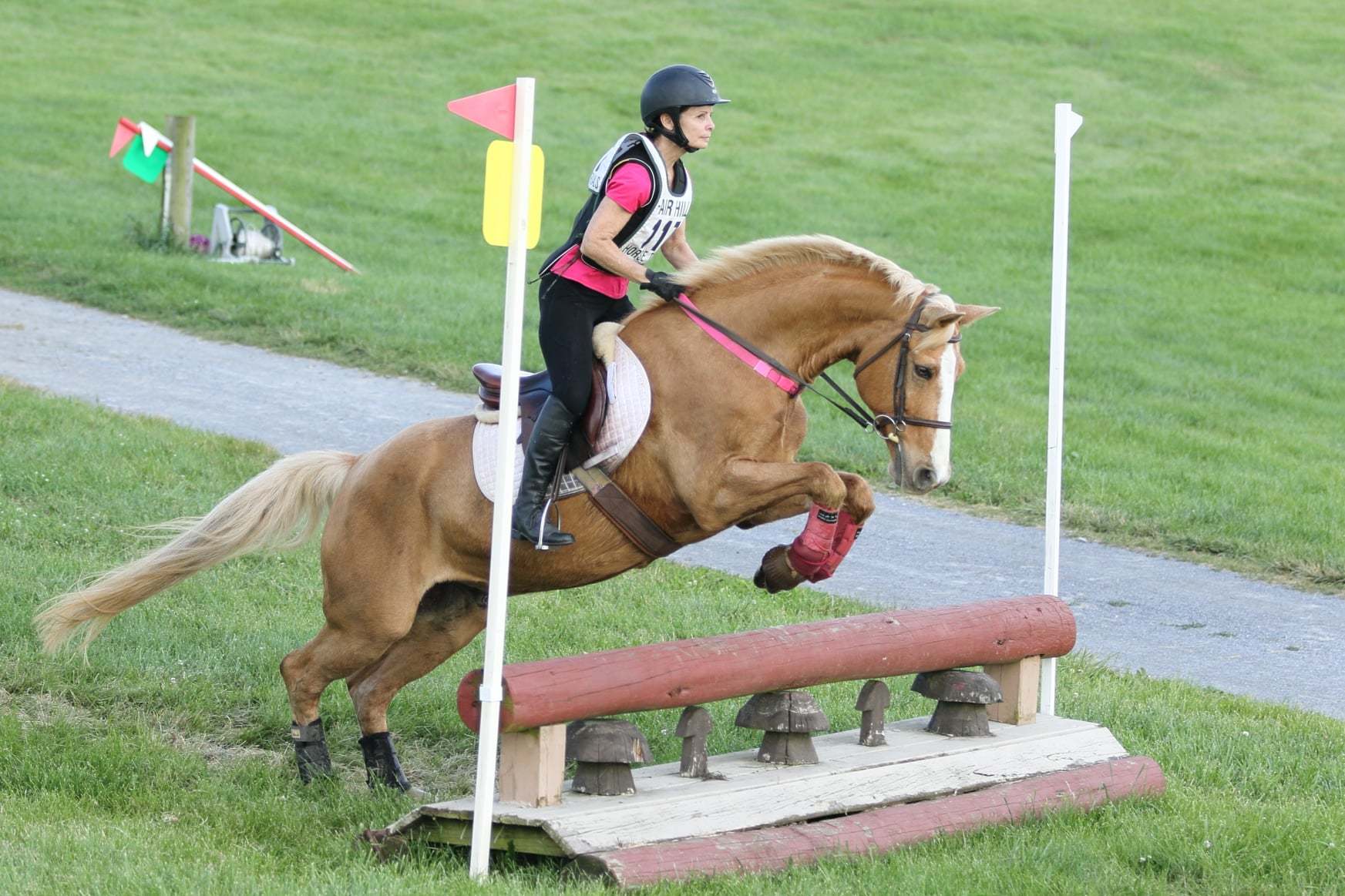
Now at age 27, Willy, too, has a change of pace. Besides partnering with Waskiewicz’s mother, he also teaches a few lessons a week. “Relinquished from his previous ‘babysitting’ duties, Willy goes out with another semi-retired Preliminary eventer during the day so they can reminisce and complain about all of the youngsters together,” said Waskiewicz. “He gets to roam freely around the farm when I’m riding other horses. He is pretty good about knowing the farm’s boundaries, but if you don’t keep an eye on him, then he will try to sneak into stalls and clean up any leftover grain.
“I know you are not supposed to humanize horses, but when you have been with one this long, it really is hard not to,” she said. “Willy has been with me for more than just big competition moments—he was my shoulder to cry on, my study partner, my excuse to leave school dances early, he saw me through my first real heartaches, my marriage, and he was the first horse we brought to the new farm. Every major event in my life, Willy has been a constant. He is family. Every once in a while I will hop on him bareback and walk in the snow or go on a hack, but we have an understanding that if he takes care of my mom, then I won't ask him to work hard again.”
For a long time Waskiewicz was “the little girl on the little pony,” and she even changed her colors to pink and black…a Barbie horse with Barbie colors. “I remember signing my first autograph at Millbrook after show jumping, and felt like a rockstar,” she said. “Everyone loves a good underdog story, and that is really what Willy represents. He was my backyard Pony Club pony that just kept jumping higher. He competed to the highest levels simply because he had the heart of a lion, and I asked him to. The epitome of partnership.
“I hope his story continues to inspire people, because horses like Willy are what cause me to love this sport and the people associated with it. You don’t need the fancy, expensive horse. You need a horse with heart.”

